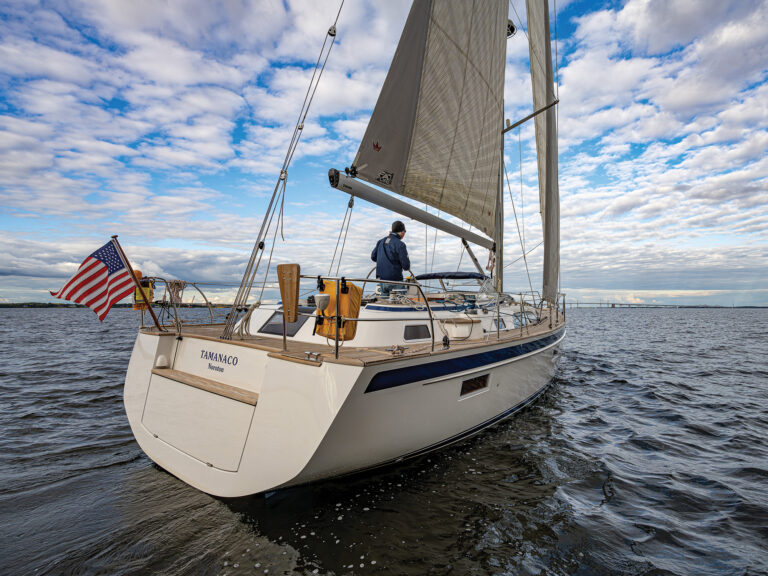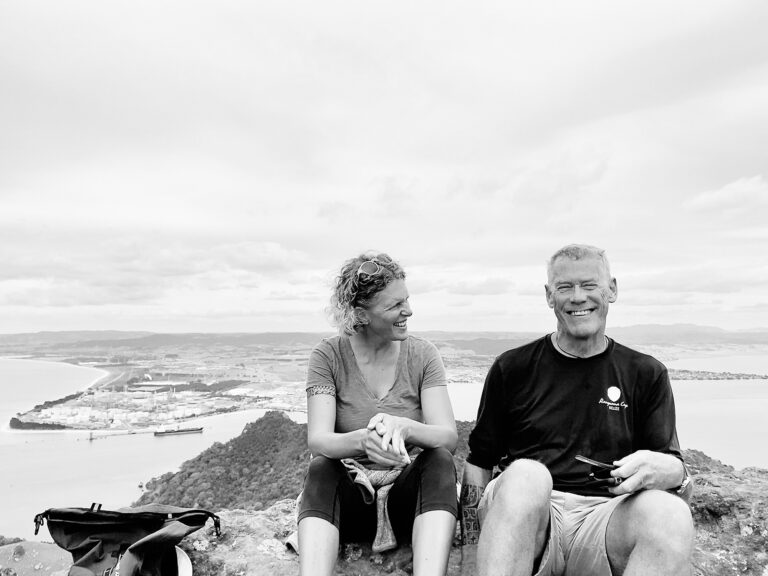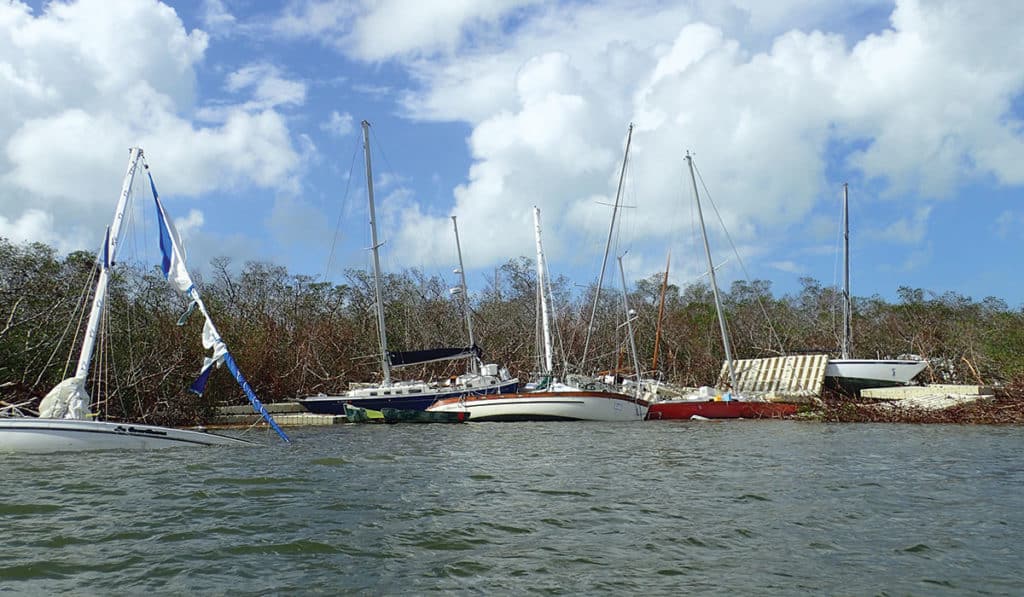
What do you do if there’s a major hurricane, Category 3 or above, bearing down on your boat? Surviving the storm involves a certain amount of luck, but you can substantially up your odds with good preparation. Our personal experiences, having taken major hits from several storms over the years, taught us many things. These 10 are the most important:
1. Check Your Insurance
Double-check your insurance policy for required preparation for a major hurricane. Also, reread the hurricane plan you filed, stating how you would prepare. Should a claim be necessary, you’ll have to prove you fulfilled your obligations. Be sure to take your policy with you if you evacuate.
2. Remove Sails
Sails must come down for any hurricane, doubly so for a major one. Tying off a roller-furled sail (genoa or main) is simply not sufficient against hurricane-force winds, which will tug at the exposed edges of the sail and pull out a little pocket — first 6 inches, then 12. It doesn’t seem like much, but when winds are 70, 100 or 130 knots, that’s enough sail area to put substantial pressure on your lines and ground tackle.
Your sail will shred, but that’s not the worst part. During Hurricane Marty, which my husband, Dave, and I rode out in La Paz, Mexico, with our Tayana 37, marina docks were pulled apart by “sailing” boats, which then crashed into other boats and docks, pulling them free as well. In other storms, we’ve seen cleats ripped out of docks and from boat decks due to the force of the wind on just a scrap of unwound sail. Boats on the hard have been toppled or flipped, creating a chain reaction.
Additionally, most insurance policies will not pay out if sails are left on. Getting sails off is arguably the most important thing you can do to help your boat survive the storm.
3. Strip the Decks
Reducing windage is key to reducing the stresses on your lines, mooring, anchors or, if on the hard, jack stands. Removing sails is the first and biggest part of this, but it’s also important to get everything else inside the saloon or off the boat that you can. Bimini, dodger, flags, grill, decorative lights, MOB devices, port covers, cockpit cushions — it all adds up to increased windage, not to mention that these items would likely be lost during a storm, or possibly become a damaging flying projectile.
Find a secure place inside the boat or ashore for the dinghy; davits are about the worst possible place because the tender will catch wind, act as a good-size sail and possibly rip the davits off.
4. Run the Lines
Having new lines of the right size and type is critical. Whether it’s dock lines, mooring lines or anchor snubbers, if your boat is in the water, the lines are the only thing keeping it in place.
In Hurricane Irma, our boat, a Gemini catamaran, was one of only a few moored in Boot Key Harbor, in the Florida Keys, with literally zero damage. We think it was roughly 50 percent luck because no other boats careened into us, but the other 50 percent was our prep, and part of that was our brand-spanking-new lines.
The boat right beside us, which did not put new lines on, broke free from its mooring and was a total loss. After the storm, I pulled up its mooring pennant with the remains of its mooring lines on it. Every single one had simply broken in the middle (not at a chafe point). Sunlight, stretching, chafe and salt all take a toll on the fibers with even a few months’ use, weakening the line and lessening its ability to stretch and absorb shock. Only one mooring failed in Boot Key Harbor, but 172 boats broke free of moorings.
Don’t use over-size low-stretch lines for a storm. Lines need to be able to stretch to take the shock that waves and wind gusts will generate. Undersize lines can part from the shock loads, but oversize lines that don’t stretch will pull cleats and other attachment points out.
We find that nylon three-strand rope is the best combination of strength, stretch and abrasion resistance. We use one size larger than our everyday lines as a compromise between the need for elasticity and strength. (On our 34-foot Gemini, our everyday lines are ½-inch, and we used 5/8-inch for Irma.)
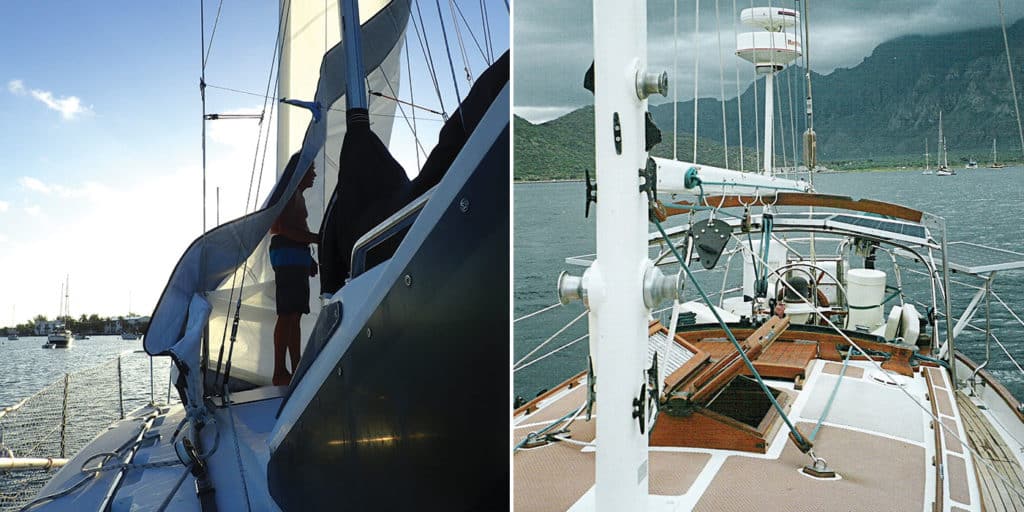
5. Rig Chafe Gear
The other part of the line equation is protecting them from chafe. Fire hose is the chafe gear of choice. Fire departments are required to periodically replace hoses and generally give the old hose away for free if you ask.
Cut pieces about 10 inches long. Make a small hole about an inch from one end, pass the line through the hose and then use a piece of light line through the hole you made to tie the fire hose to the cleat, stanchion or dock. Don’t tie the chafe gear to the line, despite what many books say. If you tie it to the line, it will not stay in the right place as the line stretches during the storm.
Use as many lines as possible, going to different attachment points on both ends. If one anchor, cleat, piling or dock section fails, you want something else holding your boat. Any long tails on lines should be tied off so that they don’t become damaging whips during the storm.
6. Shut Down Systems
Disconnect from shore power. Hurricanes and electricity are a bad combination. Close seacocks other than for bilge pumps and engine (if you plan to leave the keys in the ignition).
Turn off and clean out the refrigerator. You don’t want the refrigerator to drain batteries that might be needed for bilge pumps.
We made a conscious decision to tie our solar panel in place for Hurricane Irma instead of removing it, realizing there was a good chance we’d lose it in the storm (we didn’t). Dave and I were evacuating five days before the storm was forecast to arrive, and we wanted our batteries to stay fully charged to power the bilge pumps if needed.
7. Take Photos
Thoroughly document your hurricane prep in case you have to make an insurance or Federal Emergency Management Agency claim to show that you followed your hurricane plan.
Don’t take just a few photos; take 50 to 100 detailed photos of how and where every line is attached and protected from chafe, as well as overall shots showing that the sails are off and the decks stripped as well as the general configuration of lines. Be sure to take these with you!
8. Help Your Neighbors
Part of surviving a hurricane is not having another boat slam into yours. While location plays some role in this, don’t rely on luck alone. Having well-prepared boats around you is key. Once your boat is ready, see if any of your neighbors need a helping hand.
We have been told that most of the damage to boats in Boot Key Harbor during Irma was caused by one large boat that broke free, slammed into docks and broke those free, and then this whole mess of boats and docks started hitting other boats and breaking them free. In Hurricane Marty in La Paz, a few boats that had left roller-furling jibs on led to the destruction of most of one marina. Your boat is only as safe as the boats around it.
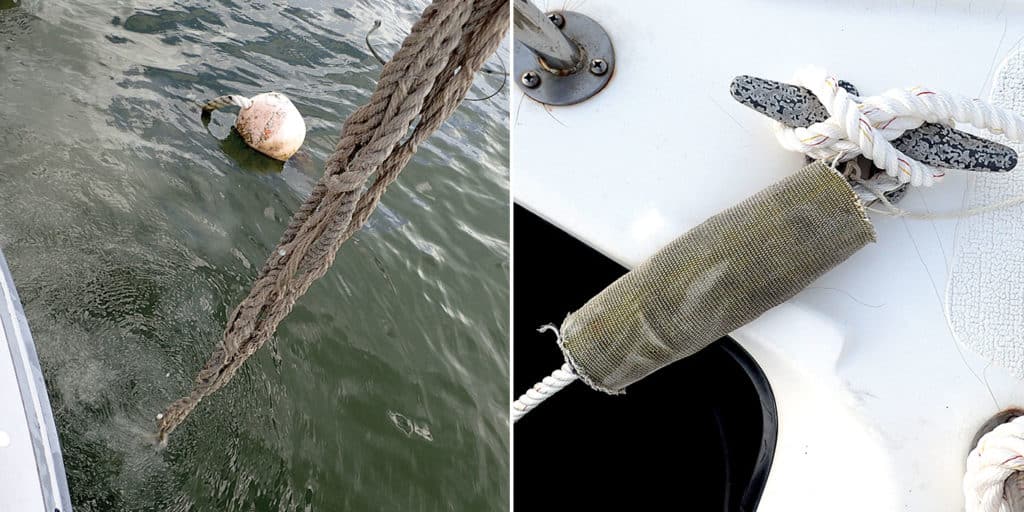
9. Lock Your Boat — or Not
Should you lock your boat when you leave it? There are pros and cons, so it’s a personal decision. We did not lock Barefoot Gal when we evacuated for Irma, knowing that she could be looted while we were gone. We also left the keys in the ignition in case she broke free and needed to (and could) be moved.
Dave and I figured that if Barefoot Gal was damaged, someone might try to come aboard to save her. Another boat in the harbor was lost before the storm when good Samaritans couldn’t get inside quickly enough to stop her from sinking. Or someone might have needed tools, food or even a place to sleep. We decided that the potential reward of leaving the boat unlocked, both for us and others in the community, far outweighed any additional risk since we were already at serious risk of losing her.
10. Evacuate Early
Above all else, get yourself, your family and pets to a safe place. Much as it pains me to say it, boats are things. Don’t risk your life trying to protect yours. Evacuate early, particularly if you will have to use public transportation. Expect significant delays.
The first step in hurricane recovery is to survive the storm so that you can recover from it.
The Unseen Post-storm Danger
Unfortunately, major hurricanes result in sunken and wrecked boats littering the water, along with building debris. Some dangers are obvious, such as broken masts, tangled rigging and boards with nails protruding.
Less obvious is the fact that all the destroyed boats have severely polluted the water with diesel, gas, oil, holding-tank contents, battery acid, engine coolant and every other liquid aboard the boat.
Skin cuts and abrasions that contact the water can quickly become infected; treat them immediately with antibiotic ointment and seek medical help at the first sign of infection. If you get in the water to secure or refloat a boat, take extreme care not to swallow water or get it in your eyes or lungs. Again, seek medical attention immediately if you do, before you have any symptoms of a problem.
One friend of ours, preparing his sunken boat to be raised after Hurricane Irma, had a near-drowning experience and ended up on life support for six days due to the diesel fuel and other things coating his lungs. Fortunately, he made a full recovery. Almost all divers in Boot Key Harbor had respiratory infections that required medical treatment after the storm.
Carolyn Shearlock has cruised for years in hurricane-prone waters. While she might be best known for her website, theboatgalley.com, and its related podcast and books, she got her start writing for Cruising World in 2003 with lessons learned from surviving Hurricane Marty.






